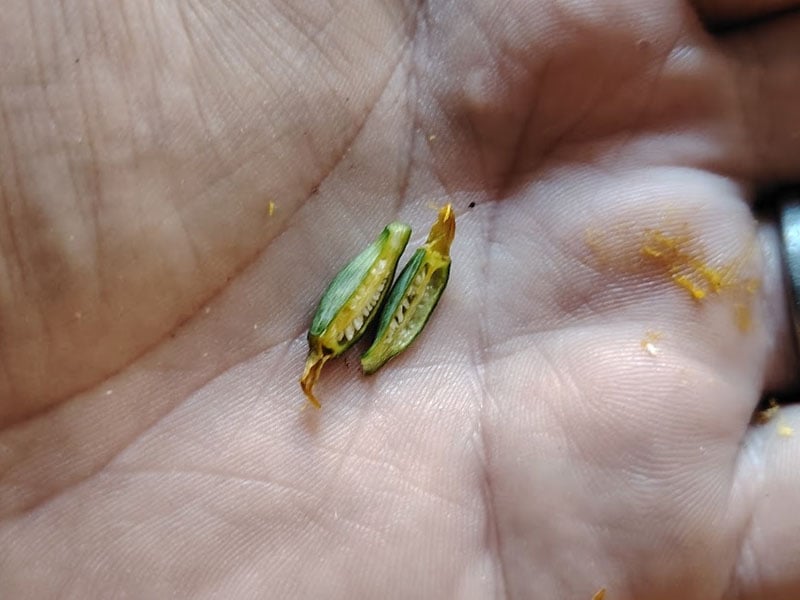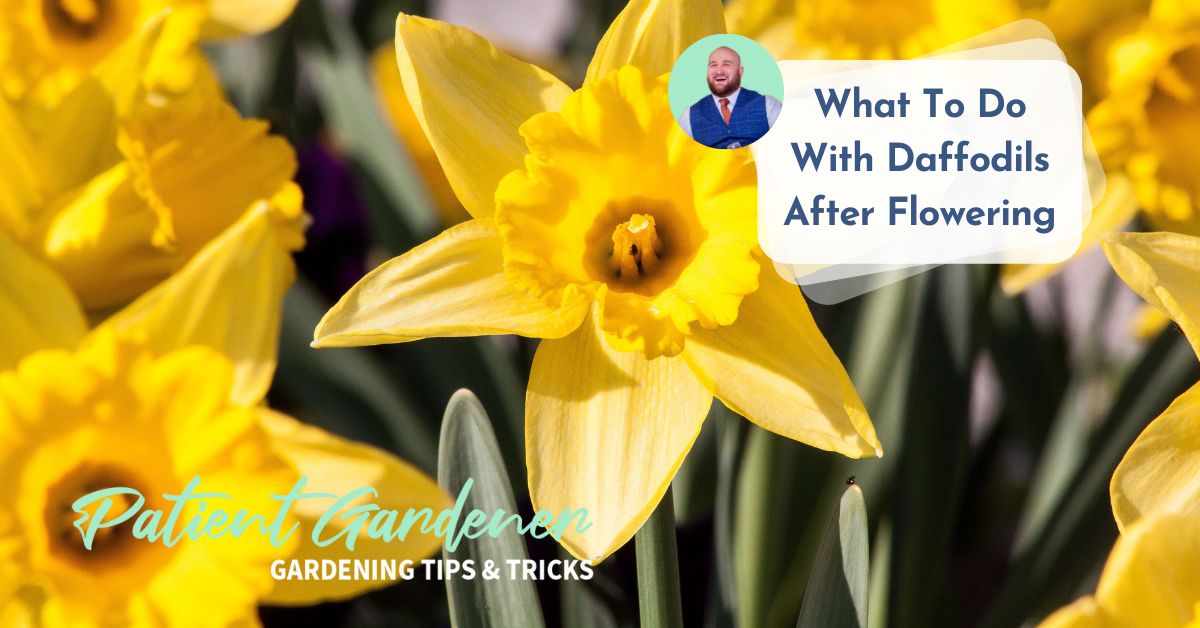With proper care, your daffodils can last year after year. But what is appropriate care? What do you do with daffodils once they have finished flowering? Let's have a look and find out.
Deadhead Old Flowers
If you have the time, it is always advisable to deadhead spent blooms on almost any flower, including daffodils.

Deadheading not only tidies up the plant and makes it look better, but it also prevents the plant from diverting its energy into creating seeds.
Below, I have opened one of the pods so you can see all the tiny seeds being formed inside.

We will not be growing daffodils from the seed heads in most circumstances, so this is wasted energy. However, once the seed head has been removed, all the energy will be directed into the bulb instead.
Daffodils From Seed
Daffodils can be grown from seed, and it is an interesting experiment to try. However, don't expect any flowers for at least 3 years!
This is what we want, as all of next year's growth will be powered, at least initially, by the energy stored in the bulb over the winter. The more we can do now to conserve that energy the better the display will be next year.
Remove Seed Heads
This ties in with deadheading as above, but is for those flowers we missed. Once the petals of the flower have disappeared, you will be left with a little green pod. This is the seed and should be removed unless you want to grow new plants from the seed.

Like deadheading, this will send energy to the bulb for next year's growth.
Let The Leaves Flop
Now we just need to let the leaves flop around on the soil. Yes, they may look unsightly, but they are still absorbing sunlight and storing that energy in the bulb.
This is vital for next year's growth so we want to allow the leaves to soak up the sun.
Many people like to tie these dying leaves up into bunches to tidy them up a little bit. And while this will make the plants look better in the short term it is not good for their long-term growth.
This is because by tying the leaves up you are massively reducing the surface area of the leaves that will get sunlight. This means they will store less energy for next year and therefore not perform as well as they could.
Let the leaves sprawl on the floor, even if they don't look good, as this will all help your daffodils look even better next spring.
Cut Back To The Ground
Once the leaves have started to yellow, you can cut them right back to the ground if you wish. This usually happens around May or early June.
The leaves will not be absorbing energy once they have yellowed so you can remove them.
I often just leave them and let them die back naturally, as it is one less job to do, and this way I am getting the most energy into the bulbs as possible.
Depending on the weather, the leaves can keep on going well into summer some years, so as long as they aren't ruining the look of your bed, you can simply leave them be.
Conclusion
You should deadhead your daffodils once they have finished flowering. Make sure to remove any seed heads that you may have missed.
When the leaves begin to droop just leave them to sprawl and do not tie them up.
You can remove all the foliage once it yellows and starts to die back. Alternatively, you can leave the leaves to die off naturally.



John says
Thank you for that information, very helpful.
sue says
Thank you for the information,
Very straight forward. Will follow out the advice given